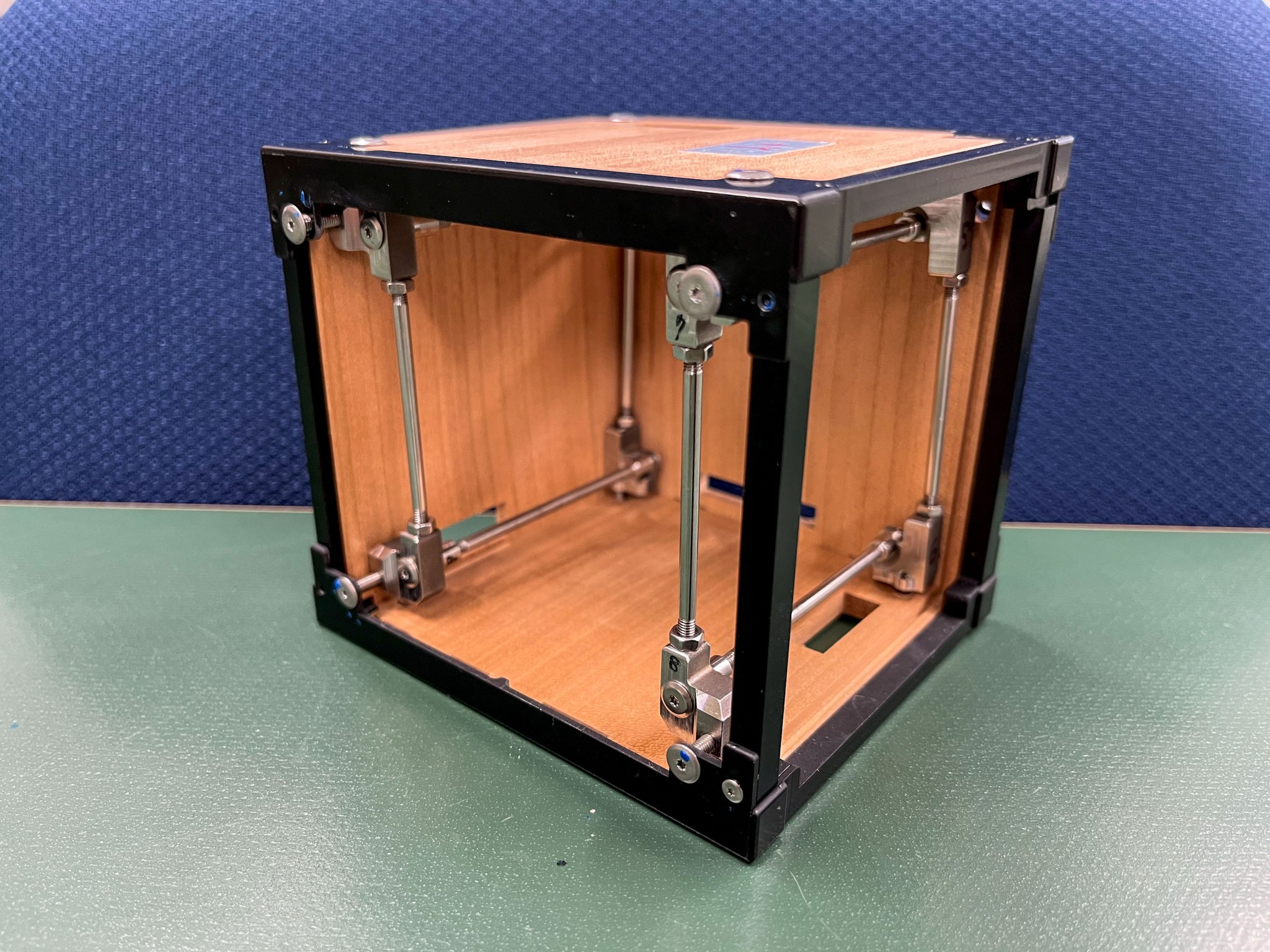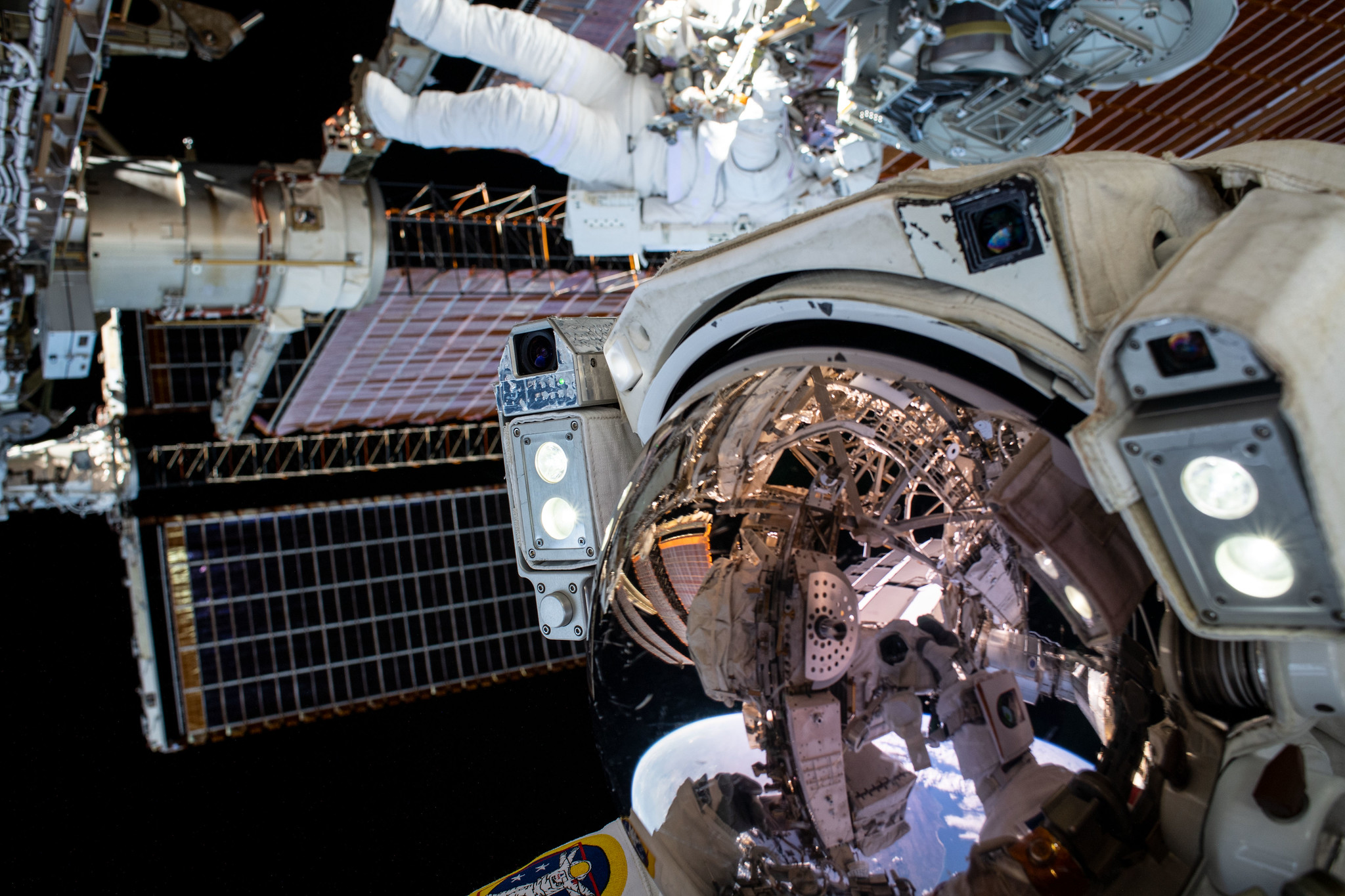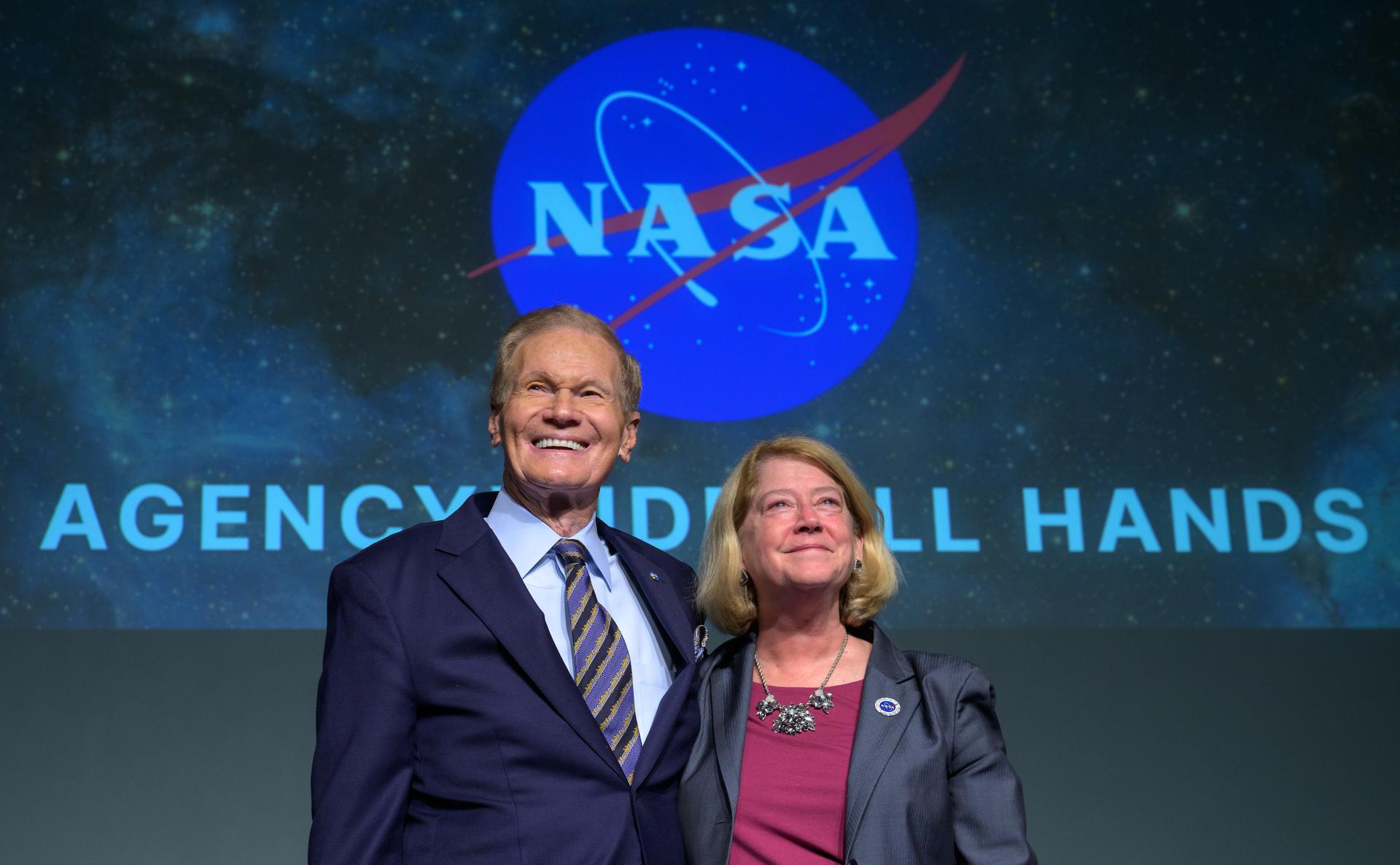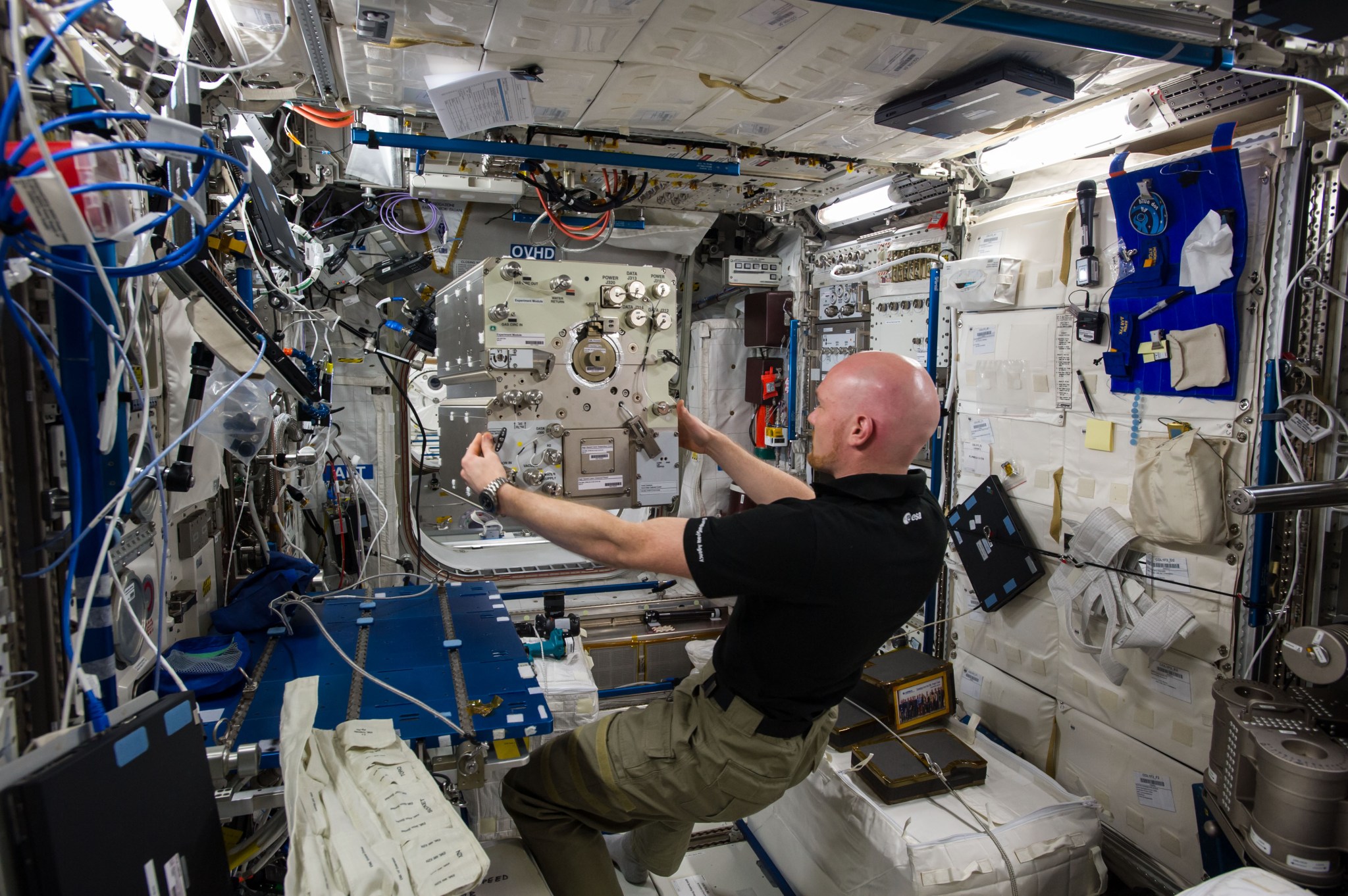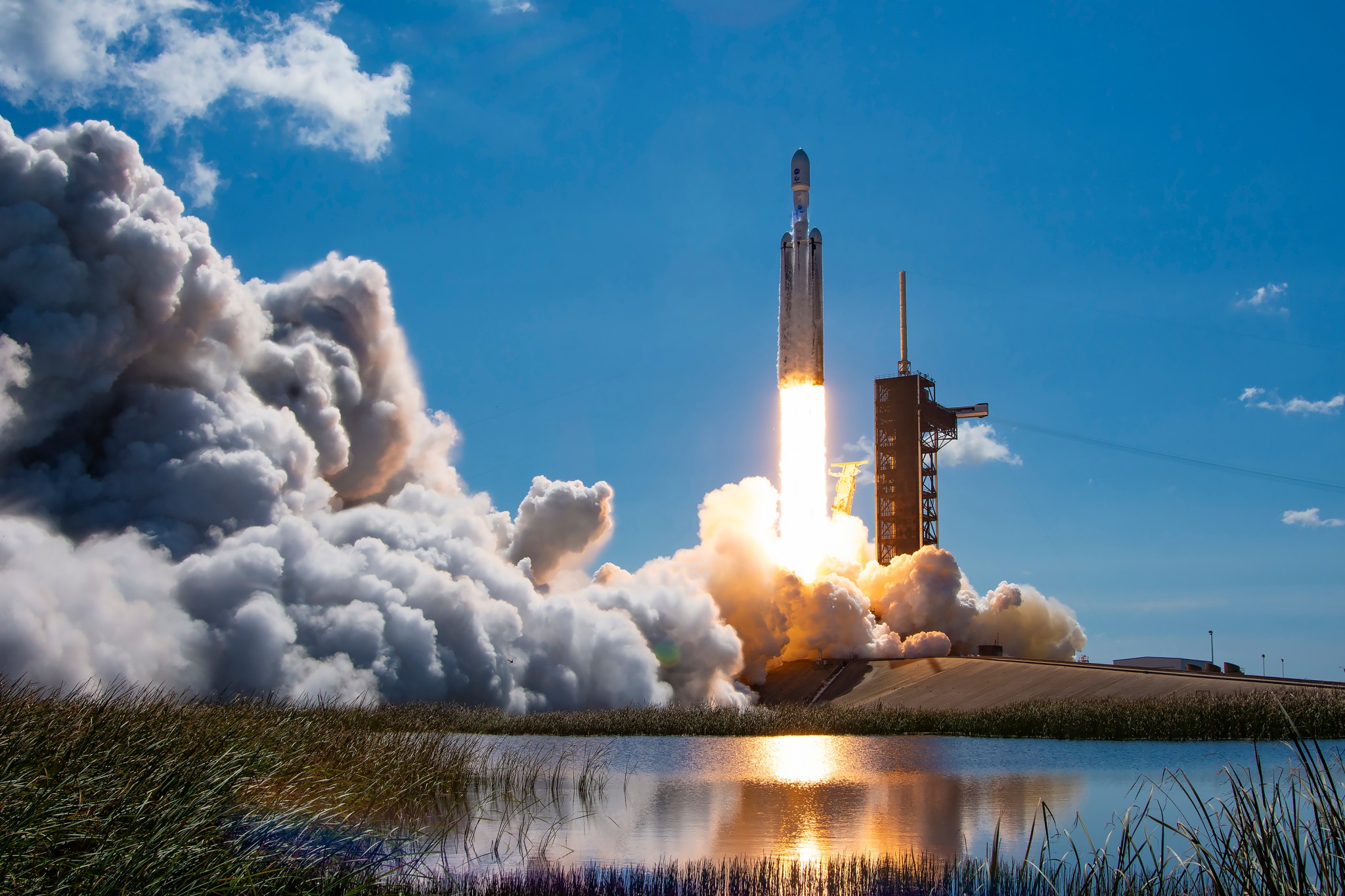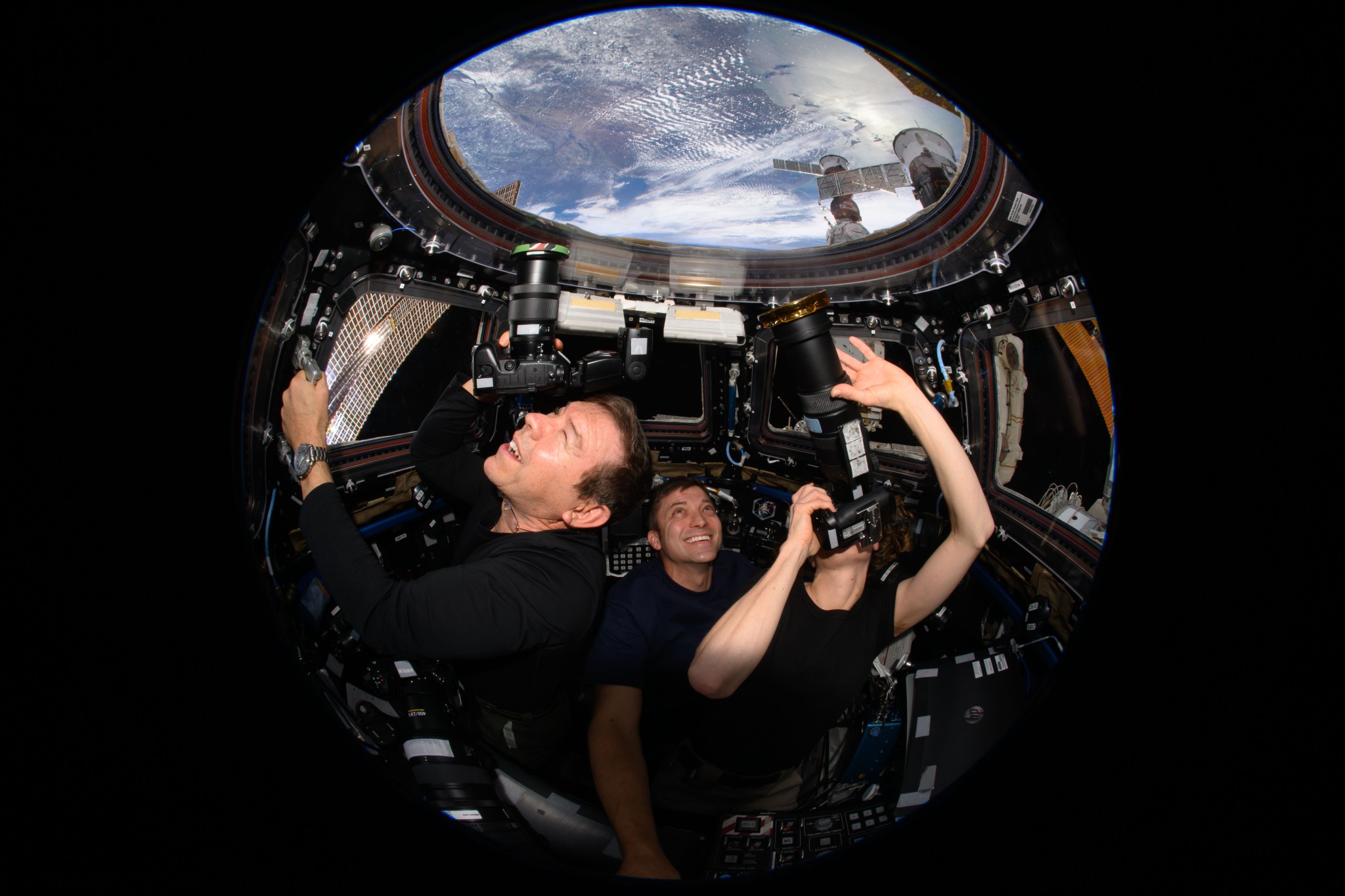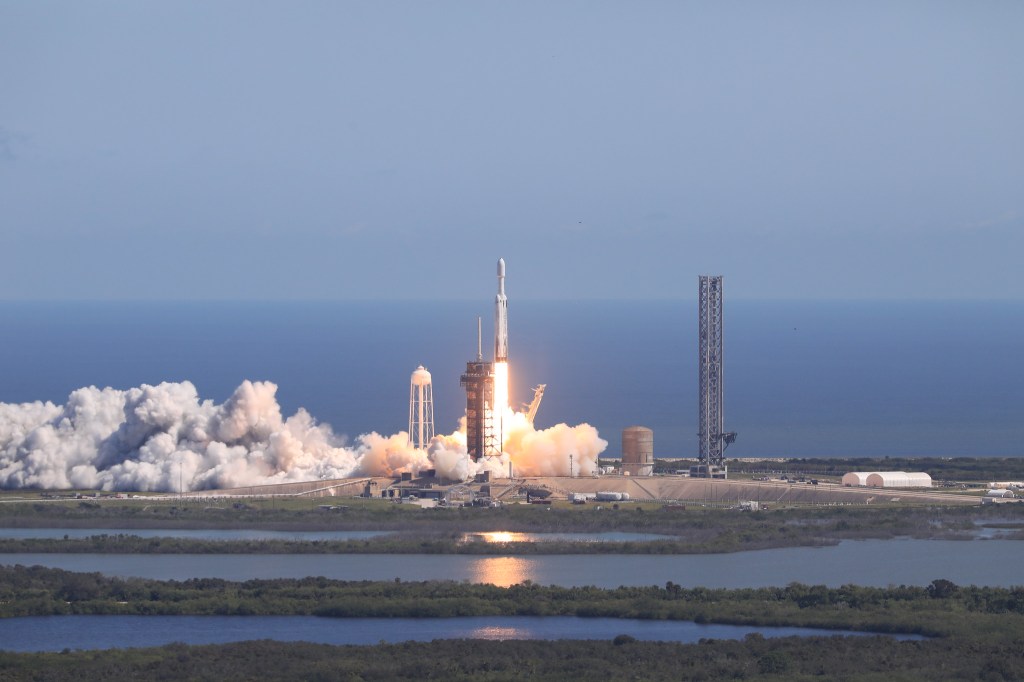Internal view of LignoSat’s structure shows the relationship among wooden panels, aluminum frames, and stainless-steel shafts. Credit: Kyoto University In December 2024, five CubeSats deployed into Earth’s orbit from the International Space Station. Among them was LignoSat, a wooden satellite from JAXA (Japanese Aerospace Exploration Agency) that investigates the use of wood in space. Findings could offer a more sustainable alternative to conventional satellites. A previous experiment aboard station exposed three species of wood to the space environment to help researchers determine the best option for LignoSat. The final design…
Read MoreTag: Humans in Space
NASA to Cover Two Spacewalks, Hold Preview News Conference
NASA astronaut Shane Kimbrough and ESA (European Space Agency) astronaut Thomas Pesquet conduct a spacewalk to complete work on the International Space Station on June 25, 2021. Credit: NASA Two NASA astronauts will venture outside the International Space Station, conducting U.S. spacewalk 91 on Thursday, Jan. 16, and U.S. spacewalk 92 on Thursday, Jan. 23, to complete station upgrades. NASA also will discuss the pair of upcoming spacewalks during a news conference at 2 p.m. EST Friday, Jan. 10, on NASA+ from the agency’s Johnson Space Center in Houston. Learn…
Read MoreAssessment of PFO as Related to DCS in the Spaceflight Environment and During Ground Testing
6 min read Preparations for Next Moonwalk Simulations Underway (and Underwater) In-person participants L-R standing: Dave Francisco, Joanne Kaouk, Dr. Richard Moon, Dr. Tony Alleman, Dr. Sean Hardy, Sarah Childress, Kristin Coffey, Dr. Ed Powers, Dr. Doug Ebersole, Dr. Steven Laurie, Dr. Doug Ebert; L-R seated: Dr. Alejandro Garbino, Dr. Robert Sanders, Dr. Kristi Ray, Dr. Mike Gernhardt, Dr. Joseph Dervay, Dr. Matt Makowski). Not pictured: Dr. Caroline Fife In June 2024, the NASA Office of the Chief Health and Medical Officer (OCHMO) Standards Team hosted an independent assessment working…
Read MoreEarth to Space Call: NASA Leaders to Speak with Station Astronauts
NASA Administrator Bill Nelson, and NASA Deputy Administrator Pam Melroy, react as they are recognized by employees during a NASA agencywide all hands on Dec. 6, 2024, at the NASA Headquarters Mary W. Jackson Building in Washington. Credit: NASA/Bill Ingalls NASA Administrator Bill Nelson and Deputy Administrator Pam Melroy will speak with NASA astronauts Nick Hague, Butch Wilmore, Suni Williams, and Don Pettit on Monday, Jan. 6, to discuss their mission aboard the International Space Station. The Earth to space call coverage begins at 1:30 p.m. EST on NASA+. Learn…
Read MoreStation Science Top News: Dec. 20, 2024
A method for evaluating thermophysical properties of metal alloys Simulation of the solidification of metal alloys, a key step in certain industrial processes, requires reliable data on their thermophysical properties such as surface tension and viscosity. Researchers propose comparing predictive models with experimental outcomes as a method to assess these data. Scientists use data on surface tension and viscosity of titanium-based alloys in industrial processes such as casting and crystal growth. Non-Equilibrium Solidification, Modelling for Microstructure Engineering of Industrial Alloys, an ESA (European Space Agency) investigation, examined the microstructure and…
Read MoreSpace Gardens
4 Min Read Space Gardens NASA astronaut Kayla Barron with chile peppers in the station’s Advanced Plant Habitat. Credits: NASA Science in Space December 2024 As NASA plans missions to the Moon and Mars, one challenge is figuring out how to provide crew members with enough healthy food. Bringing along a supply for months or even years in space is impractical, and stored food can lose taste and nutritional value. Growing plants in space is one way to help solve this problem. Tending space gardens also has positive psychological effects…
Read MoreStation Science Top News: Dec. 13, 2024
Benchmarks for solidifying metal alloys Researchers report benchmark data for modeling the growth of specific types of microstructures that form during solidification of metal alloys under different conditions. These microstructures affect the properties of materials and products such as refrigeration devices and solar cells. The ESA (European Space Agency) Columnar-to-Equiaxed Transition in Solidification Processing (CETSOL) investigation studied the processes of metal alloy solidification and the crystal patterns that form as liquids transition to solids. Results could improve ground-based development of lightweight, high-performance structural materials for space and ground applications. Microgravity…
Read MoreNASA Kennedy Top 24 Stories of 2024
A SpaceX Falcon Heavy rocket carrying NASA’s Europa Clipper spacecraft lifts off from Launch Complex 39A at NASA’s Kennedy Space Center in Florida at 12:06 p.m. EDT on Monday, Oct. 14, 2024. SpaceX From sending crew members to the International Space Station to launching a spacecraft to Jupiter’s icy moon Europa to determine if it could support life, 2024 was a busy record setting year for NASA and its partners at Kennedy Space Center in Florida. JANUARYFirst Lunar Lander Takes Flight The first flight of NASA’s CLPS (Commercial Lunar Payload…
Read MoreScience Photo Album Showcases Space Station Research in 2024
NASA Astronauts (from left) Mike Barratt, Matthew Dominick, and Loral O’Hara take photographs of Earth from inside the cupola aboard space station. Credit: NASA That’s a wrap! Astronauts aboard the International Space Station conducted hundreds of science experiments and technology demonstrations during 2024. Crew members participated in research across a variety of scientific disciplines and accomplished milestones demonstrating benefits for future missions and humanity back on Earth. Their work included snapping thousands of images of Earth to understand our planet’s changing landscape, bioprinting cardiac tissues to validate technology for organ…
Read MoreNASA Accelerates Space Exploration, Earth Science for All in 2024
With a look back at 2024, NASA is celebrating its many innovative and inspiring accomplishments this year including for the first time, landing new science and technology on the Moon with an American company, pushing the boundaries of exploration by launching a new mission to study Jupiter’s icy moon Europa; maintaining 24 years of continuous human exploration off the Earth aboard the International Space Station, and unveiling the first look at its supersonic quiet aircraft for the benefit of humanity. The agency also shared the wonder of a total eclipse…
Read More